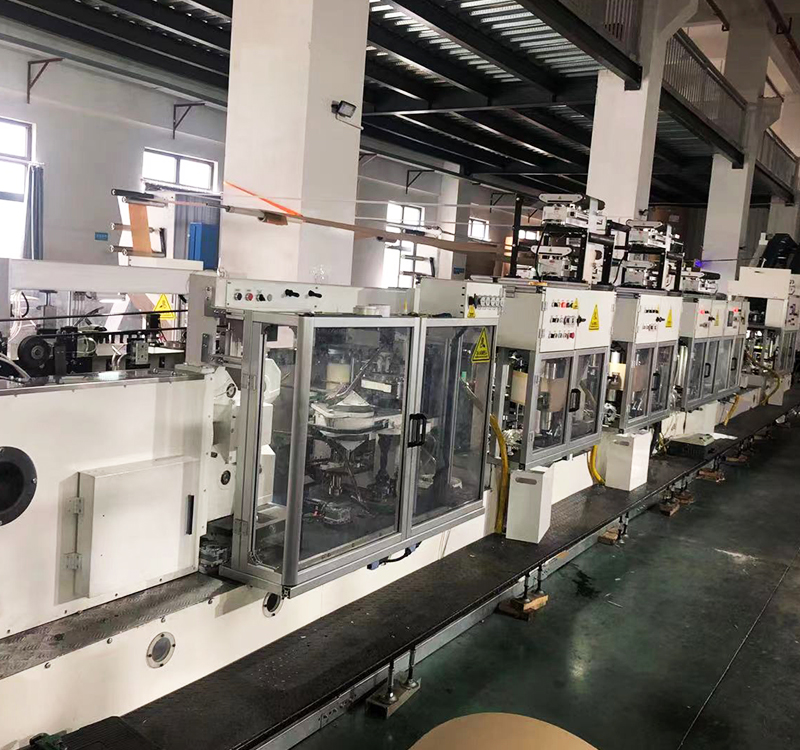Revolutionizing Packaging Efficiency: An In-Depth Look at Automatic Stacking Paper Bag Machines
Release time:2025-05-14 Classification:Knowledge
The packaging industry has undergone significant advancements in recent years, with automation playing a pivotal role in streamlining operations. Among the innovations transforming production lines, the automatic stacking paper bag machine stands out as a game-changer for businesses seeking precision, speed, and sustainability. This article explores the technology, benefits, and applications of this cutting-edge equipment, shedding light on its role in modern manufacturing ecosystems.

Understanding the Automatic Stacking Paper Bag Machine
An automatic stacking paper bag machine is a fully integrated system designed to produce, organize, and stack paper bags with minimal human intervention. Combining mechanical engineering, sensor technology, and programmable logic controls, these machines optimize workflows by converting flat paper sheets into finished bags, aligning them into uniform stacks, and preparing them for packaging or shipping. The process eliminates manual handling errors while ensuring consistent output quality.
Core Components and Workflow
- Material Feeding System: Rolls of kraft paper or recycled paper are loaded into the machine, which automatically feeds and cuts sheets to predefined dimensions.
- Bag Formation Unit: Using heat sealing, ultrasonic bonding, or adhesive methods, the machine folds and seals paper into bags of varying sizes and styles (e.g., flat-bottom, SOS, or merchandise bags).
- Stacking Mechanism: A robotic arm or conveyor system precisely counts and arranges finished bags into neat stacks. Advanced models incorporate optical sensors to detect misaligned or defective bags, diverting them for reprocessing.
- Output and Packaging: Completed stacks are transferred to pallets, cartons, or shrink-wrap stations, ready for distribution.
Key Advantages of Automation
- Enhanced Productivity: Capable of producing 80–200 bags per minute (depending on bag size and complexity), these machines drastically outperform manual labor.
- Precision and Consistency: Programmable settings ensure uniform bag dimensions, handle placements, and stack heights, reducing material waste.
- Labor Cost Reduction: Automation minimizes reliance on manual stacking and quality checks, allowing staff to focus on higher-value tasks.
- Scalability: Modular designs enable integration with existing production lines, supporting businesses as they expand.
- Sustainability: By optimizing material usage and reducing errors, the machines contribute to eco-friendly manufacturing practices.
Applications Across Industries
Automatic stacking paper bag machines cater to diverse sectors:
- Food Packaging: Ideal for bakeries, groceries, and takeout services requiring hygienic, grease-resistant bags.
- Retail and E-Commerce: Customizable prints and sizes meet branding and logistical demands for shopping bags.
- Industrial Use: Durable paper bags for construction materials, chemicals, or agricultural products benefit from automated heavy-duty production.
Technical Innovations Driving Performance
Modern machines incorporate several advanced features:
- PLC Control Systems: User-friendly interfaces allow operators to adjust parameters such as bag dimensions, stack counts, and speed.
- Servo Motors: High-precision motors ensure smooth motion control, reducing mechanical wear and energy consumption.
- Machine Vision: Cameras and AI algorithms inspect print alignment, seal integrity, and stack uniformity in real time.
- IoT Connectivity: Remote monitoring and predictive maintenance capabilities minimize downtime by alerting technicians to potential issues.
Future Trends and Industry Impact
As demand for sustainable packaging grows, automatic stacking paper bag machines are poised to become indispensable. Future iterations may focus on:
- Energy Efficiency: Integrating renewable energy sources or low-power components.
- Biodegradable Materials: Adapting systems to handle plant-based or compostable papers.
- AI-Driven Optimization: Machine learning algorithms could further enhance speed, defect detection, and customization.
The automatic stacking paper bag machine represents a convergence of efficiency, reliability, and environmental responsibility. By automating repetitive tasks and ensuring flawless output, it empowers manufacturers to meet rising consumer expectations while maintaining cost-effectiveness. As technology evolves, these machines will continue to redefine the boundaries of packaging automation, solidifying their role as a cornerstone of industrial innovation.
Whether for small-scale operations or large factories, investing in an automatic stacking paper bag machine is a strategic move toward future-proofing production capabilities. Its ability to harmonize speed with precision makes it not just a tool but a transformative asset for the packaging sector.






